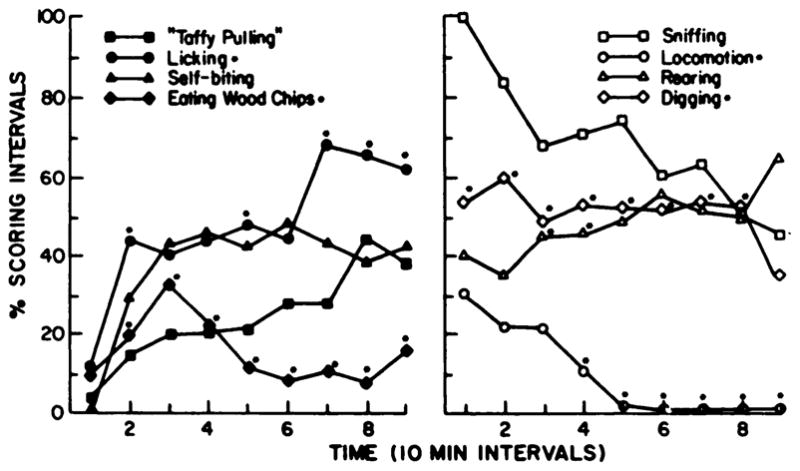Fig. 6.

Effects of neonatal 6-OHDA-treatment causing preferential reduction of brain dopamine on behavioral responses to L-dopa. Behaviors illustrated are in rats treated with desipramine (20 mg/kg) 1 hr before 6-OHDA (100 μg intracistemally) to reduce only brain dopamine and not norepinephrine at 5 days of age (see table 5). Behaviors were scored as described under “Methods.” Over time, behaviors induced by L-dopa (100 mg/kg) in rats with brain dopamine preferentially reduced were compared statistically to behavioral responses observed in 6-OHDA-treated neonates, controls and adult 6-OHDA-treated rats. Behaviors illustrated are significantly different from control. Notations on the graph refer to differences with behaviors observed in neonatal 6-OHDA-treated rats with both catecholamines reduced (see fig. 2 for comparison with some of the behaviors). *p < .05 when compared to neonatal 6-OHDA-treated rats.
